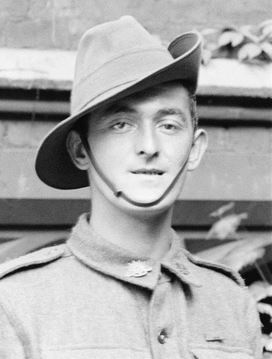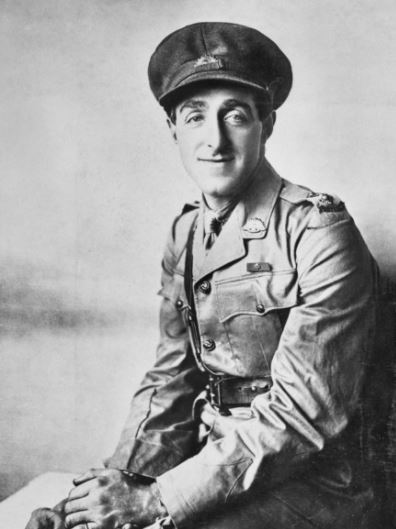Private Thomas James Bede Kenny VC (1896 - 1953, 56yo)

Born in Paddington, New South Wales, on 29 September 1896, Bede Kenny left school to begin training as a chemist’s assistant but quickly abandoned that path to enlist in the AIF in August 1915. He joined the 2nd Battalion in early 1916 after a brief period in Egypt with the 54th Battalion, and deployed to France as the Western Front campaign intensified.
During the Second Battle of Pozières, Kenny served in his battalion’s bombing platoon. It was, however, at Hermies in April 1917 that he performed the act of gallantry for which he was awarded the Victoria Cross. When his platoon came under devastating fire from a well-defended German position, Kenny advanced alone, braving the open ground to throw grenades into the enemy post. His final grenade destroyed the machine-gun nest, and he captured the surviving enemy troops. His initiative helped secure the success of the assault.
Following the award, Kenny was promoted and later wounded in action during the fighting at Merris. He returned to Australia in 1918 suffering from trench foot and shrapnel wounds, and was discharged in December that year. Though he avoided speaking publicly about the war, he remained active in veterans' affairs and led Victoria Cross recipients during Sydney’s Anzac Day marches.
Kenny died in 1953 at Concord Repatriation Hospital. In a bitter twist, military police—an organisation he had spurned during the war—acted as pallbearers at his funeral. His legacy was honoured four years later with the opening of the Bede Kenny Memorial Ward at Wentworth Private Hospital, supporting veterans excluded from repatriation hospitals.
Lieutenant Leonard Maurice Keysor VC (1885 - 1951, 64yo)

Leonard Keysor was born in London on 3 November 1885. After completing his education, he spent ten years in Canada before settling in Sydney, where he worked as a clerk. When war broke out, he enlisted in the AIF and joined the 1st Battalion, embarking for Egypt in October 1914.
Keysor came ashore at Gallipoli on the first day of the landing. It was during the ferocious fighting at Lone Pine in August 1915 that he distinguished himself. As Turkish grenades rained into the trench, he showed astonishing composure—catching them mid-air or smothering them with sandbags and even his coat. He returned many with the calm precision of a seasoned sportsman. Though wounded twice, he refused to withdraw, continuing his efforts for two full days and nights. His bravery earned him the Victoria Cross.
After being evacuated with illness, he rejoined the fight in France in 1916. He fought at Pozières, later transferring to the 42nd Battalion. Keysor steadily rose to the rank of Lieutenant, but his service was punctuated by multiple wounds, including from gas near Villers-Bretonneux in 1918.
Discharged in December that year due to his injuries, he returned briefly to clerical work before entering business in London. Though he volunteered again in 1939, he was deemed medically unfit. Keysor died of cancer in London in 1951. His Victoria Cross is held at the Australian War Memorial.
Last Reviewed 06/2025









